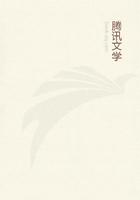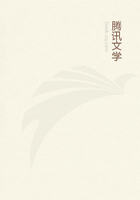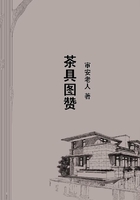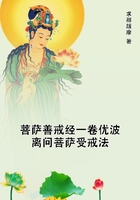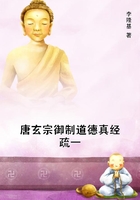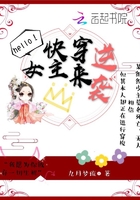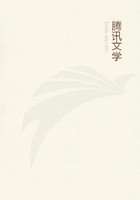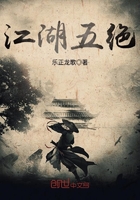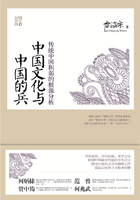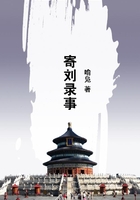It is this hand-like office of the anterior limbs which explains why in some of the polydactylous quadrupeds, such as wolves, lions, dogs, and leopards, there are actually five digits on each forefoot, though there are only four on each hind one. For the fifth digit of the foot corresponds to the fifth digit of the hand, and like it is called the big one. It is true that in the smaller polydactylous quadrupeds the hind feet also have each five toes. But this is because these animals are creepers; and the increased number of nails serves to give them a tighter grip, and so enables them to creep up steep places with greater facility, or even to run head downwards.
In man between the arms, and in other animals between the forelegs, lies what is called the breast. This in man is broad, as one might expect; for as the arms are set laterally on the body, they offer no impediment to such expansion in this part. But in quadrupeds the breast is narrow, owing to the legs having to be extended in a forward direction in progression and locomotion.
Owing to this narrowness the mammae of quadrupeds are never placed on the breast. But in the human body there is ample space in this part; moreover, the heart and neighbouring organs require protection, and for these reasons this part is fleshy and the mammae are placed upon it separately, side by side, being themselves of a fleshy substance in the male and therefore of use in the way just stated; while in the female, nature, in accordance with what we say is her frequent practice, makes them minister to an additional function, employing them as a store-place of nutriment for the offspring. The human mammae are two in number, in accordance with the division of the body into two halves, a right and a left. They are somewhat firmer than they would otherwise be, because the ribs in this region are joined together; while they form two separate masses, because their presence is in no wise burdensome. In other animals than man, it is impossible for the mammae to be placed on the breast between the forelegs, for they would interfere with locomotion; they are therefore disposed of otherwise, and in a variety of ways. Thus in such animals as produce but few at a birth, whether horned quadrupeds or those with solid hoofs, the mammae are placed in the region of the thighs, and are two in number, while in such as produce litters, or such as are polydactylous, the dugs are either numerous and placed laterally on the belly, as in swine and dogs, or are only two in number, being set, however, in the centre of the abdomen, as is the case in the lion. The explanation of this latter condition is not that the lion produces few at a birth, for sometimes it has more than two cubs at a time, but is to be found in the fact that this animal has no plentiful supply of milk. For, being a flesheater, it gets food at but rare intervals, and such nourishment as it obtains is all expended on the growth of its body.
In the elephant also there are but two mammae, which are placed under the axillae of the fore limbs. The mammae are not more than two, because this animal has only a single young one at a birth; and they are not placed in the region of the thighs, because they never occupy that position in any polydactylous animal such as this. Lastly, they are placed above, close to the axillae, because this is the position of the foremost dugs in all animals whose dugs are numerous, and the dugs so placed give the most milk. Evidence of this is furnished by the sow. For she always presents these foremost dugs to the first-born of her litter. A single young one is of course a first-born, and so such animals as only produce a single young one must have these anterior dugs to present to it; that is they must have the dugs which are under the axillae. This, then, is the reason why the elephant has but two mammae, and why they are so placed. But, in such animals as have litters of young, the dugs are disposed about the belly; the reason being that more dugs are required by those that will have more young to nourish. Now it is impossible that these dugs should be set transversely in rows of more than two, one, that is, for each side of the body, the right and the left; they must therefore be placed lengthways, and the only place where there is sufficient length for this is the region between the front and hind legs. As to the animals that are not polydactylous but produce few at a birth, or have horns, their dugs are placed in the region of the thighs. The horse, the ass, the camel are examples; all of which bear but a single young one at a time, and of which the two former have solid hoofs, while in the last the hoof is cloven.
As still further examples may be mentioned the deer, the ox, the goat, and all other similar animals.
The explanation is that in these animals growth takes place in an upward direction; so that there must be an abundant collection of residual matter and of blood in the lower region, that is to say in the neighbourhood of the orifices for efflux, and here therefore nature has placed the mammae. For the place in which the nutriment is set in motion must also be the place whence nutriment can be derived by them. In man there are mammae in the male as well as in the female; but some of the males of other animals are without them. Such, for instance, is the case with horses, some stallions being destitute of these parts, while others that resemble their dams have them. Thus much then concerning the mammae.
Next after the breast comes the region of the belly, which is left unenclosed by the ribs for a reason which has already been given; namely that there may be no impediment to the swelling which necessarily occurs in the food as it gets heated, nor to the expansion of the womb in pregnancy.

